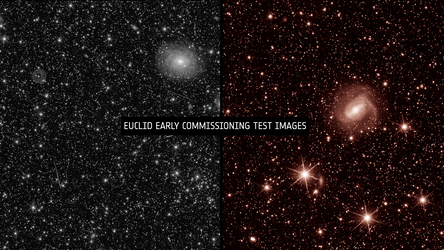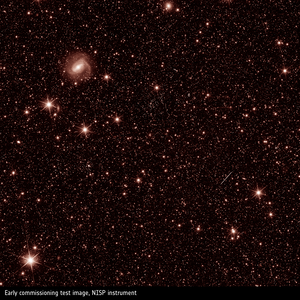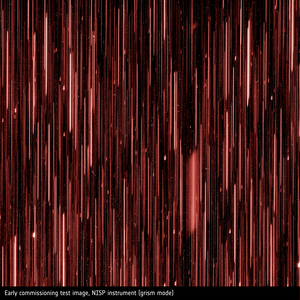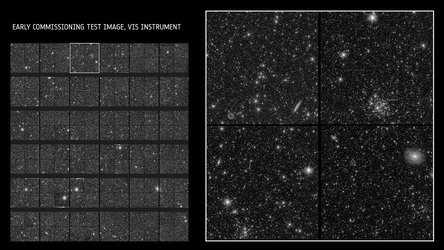
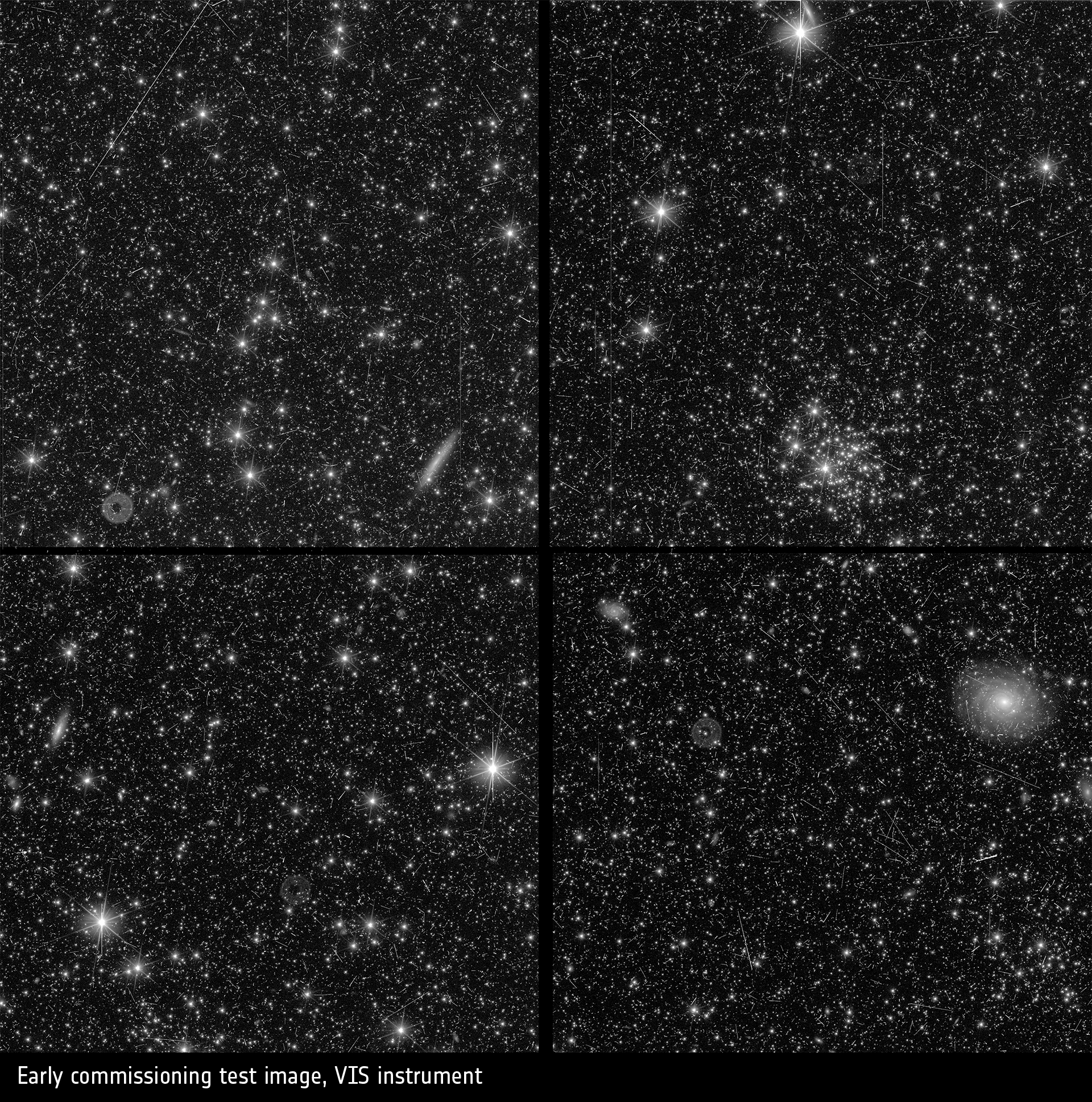
Early commissioning test image – VIS instrument
Euclid’s VISible instrument (VIS) will image the sky in visible light (550–900 nm) to take sharp images of billions of galaxies and measure their shapes. This image was taken during commissioning of Euclid to check that the focused VIS instrument worked as expected. Because it is largely unprocessed, some unwanted artefacts remain – for example the cosmic rays that shoot straight across. The Euclid Consortium will ultimately turn the longer-exposed survey observations into science-ready images that are artefact-free, more detailed, and razor sharp.
This first VIS image is already full of detail; we see spiral and elliptical galaxies, nearby and distant stars, star clusters, and much more. But the area of sky that it covers is actually only about a quarter of the width and height of the full Moon. Euclid’s telescope collected light for 566 seconds to enable VIS to create this image.
This image shows only a small part of VIS’s huge field of view (one out of 36 detectors). Click here for the full image.

